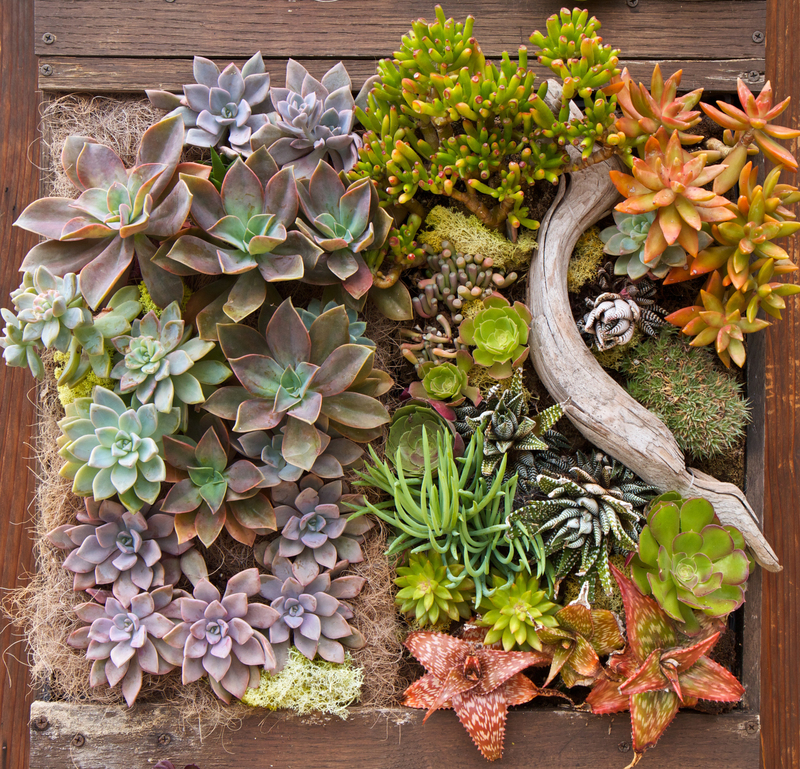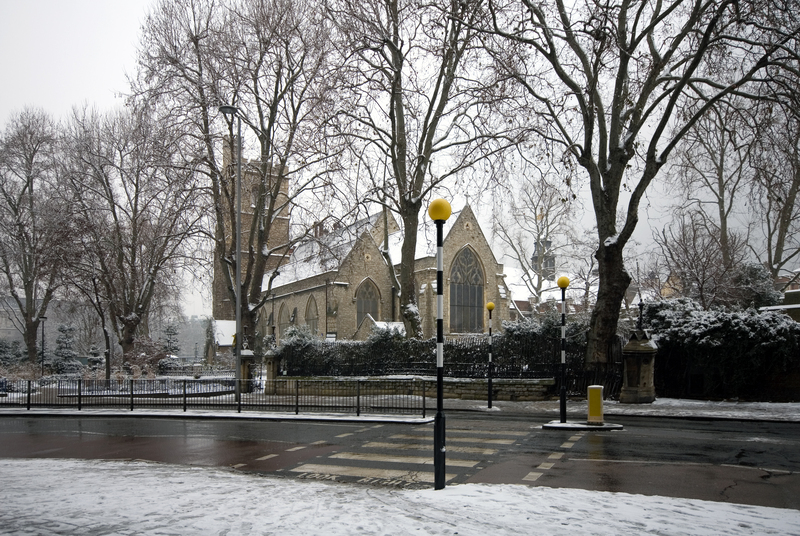Building a Garden Both You and Your Dog Will Enjoy
Posted on 24/09/2025
Building a Garden Both You and Your Dog Will Enjoy
Creating a beautiful, functional garden is a source of joy for many homeowners. However, if you're a proud dog owner, you might find that your landscaping dreams need a pet-friendly twist. Fortunately, with a bit of thoughtful planning, you can design a garden that is both a serene retreat for you and a safe, stimulating environment for your furry companion. In this article, we'll look at the essentials of building a garden for you and your dog, covering design ideas, safety tips, plant choices, play areas, and much more. By the end, you'll be well-equipped to craft a dog-friendly garden that meets both your needs and your canine's.

Why Build a Dog-Friendly Garden?
There are countless reasons to create a pet-friendly garden. For one, dogs need outdoor time for exercise, exploration, and mental stimulation. Meanwhile, creating a garden space that accommodates your dog's natural instincts--like sniffing, digging, and napping--can decrease boredom and destructive behaviors inside your home. Plus, a harmonious garden design ensures that your cherished plants thrive, your property stays neat, and your dog is both happy and safe.
- Promotes exercise and mental well-being for your dog
- Protects valuable plants from accidental damage
- Enhances bonds between you and your pet through shared outdoor activities
- Improves overall home value and curb appeal
Assessing Your Space and Your Dog's Needs
Every pet-friendly garden should start with a good plan. Consider these factors before you start:
1. Size of Your Yard
Space dictates design. For smaller yards, prioritize durable surfaces and vertical gardening. Large spaces can accommodate dog play zones and diverse plantings.
2. Your Dog's Personality
Do you have a high-energy border collie, a laid-back bulldog, or a curious beagle? Your dog's habits--like digging, chewing, or sunbathing--will influence the garden's features. Understanding your pup is key for a successful design.
3. Garden Sunlight & Climate
Where are the sunny and shady spots? What are the local weather conditions, and what plants thrive in your region? Dogs love variety--cool shaded spaces to rest, sunny patches for warmth, and areas to explore.
4. Safety Concerns
Pet-proofing your garden is essential. Consider fencing, escape hazards, and eliminating poisonous plants. Address these from the outset for peace of mind.
Design Ideas for a Garden Both You and Your Dog Will Love
An enjoyable dog-friendly garden marries style and function. Here are the top ideas for building a garden both you and your dog will enjoy:
Dog Paths and Trails
Dogs are natural explorers. Designate garden pathways where your dog is free to roam. Use mulch, gravel, or flagstones--avoid hot asphalt or sharp-edged stones.
- Looping paths encourage curious sniffing and patrolling.
- Keep paths away from delicate flower beds.
- Make corners visible to reduce surprise encounters (with people or wildlife).
Sturdy, Pet-Friendly Plants
Select plants that withstand occasional trampling or rough play. Opt for non-toxic varieties safe for dogs. Some all-star options include:
- Marigolds, sunflowers, and snapdragons (colorful and safe)
- Lavender and rosemary (aromatic, hardy, and resilient)
- Ferns, bamboo, and ornamental grasses for texture and screening
Avoid these common toxic plants:
- Lilies, tulips, and daffodils
- Azaleas and rhododendrons
- Foxglove, yew, and sago palm
If in doubt, check the ASPCA's list of toxic and non-toxic plants before planting.
Shaded Resting Spots
Just like you, dogs need a place to escape the sun's heat.
- Plant trees or install pergolas and shade sails.
- Create cozy alcoves with dog houses, benches, or low shrubs.
- Consider a cooling station: a self-filling water bowl and a shady mat can make hot days safe and pleasant.
Digging Zones
If your dog is a digger, provide a designated digging area. Train your pup to focus here with buried treasures, like toys or treats, and use sand or mulch for easy digging. This focuses energy and preserves your garden beds.
Water Features
Many dogs adore water play. A shallow dog pool, bubbler fountain, or small pond (with easy entry and exit for safety) brings fun and cooling relief--while enhancing the garden's tranquility.
Secure Fencing and Gates
Safety first! Secure boundaries prevent escape and shield pets from hazards.
- Fencing should be tall enough for your breed (at least 4-6 feet for most dogs).
- Check for gaps, weak spots, or climbable surfaces.
- Self-closing gates eliminate slip-outs.
- Consider privacy screens to block dogs' views of street distractions.
Creating Play and Enrichment Areas
A garden designed for both people and dogs should offer variety, stimulation, and shared enjoyment. Try these ideas:
Agility and Training Courses
Setup simple agility features, like tunnels, low jumps, or weave poles. These not only provide excellent exercise but also encourage bonding and learning.
Fetch-Friendly Lawns
Dedicate an open patch of durable lawn or synthetic turf for running and fetching. Choose tough grass types such as Bermuda or Kentucky bluegrass, which recover well from wear and tear.
Toy Boxes and Interactive Features
Install weatherproof toy bins or interactive puzzle feeders. Rotate toys regularly to keep your pup interested.
Dog "Observation Decks"
Dogs love to survey their territory. Build low platforms, safe raised beds, or sturdy benches for them to perch and watch the world.
Tips for Maintaining Your Pet-Friendly Garden
With pets, garden upkeep matters more than ever. Follow these guidelines to keep your outdoor haven looking lovely--and feeling safe.
- Regularly clean up pet waste to prevent smells and brown patches in grass.
- Promptly repair dug-up spots, broken plants, or damaged fencing.
- Avoid using harmful chemicals, pesticides, or fertilizers. Opt for organic and pet-safe garden products whenever possible.
- Train your dog gently but consistently. Positive reinforcement helps establish ground rules (e.g., where to potty, where to dig, and what to leave alone).
- Keep water bowls filled, and provide fresh water daily.
Companion Planting: Combining Beauty and Function
With thoughtful selections, your dog-friendly garden can be a feast for the senses--colorful, fragrant, and resilient. Consider plant placement and design:
- Border thick beds with ornamental grasses or low shrubs to protect tender blooms.
- Plant robust perennials in high-traffic zones and delicate flowers in raised beds or pots out of reach.
- Incorporate herbs like thyme, oregano, and mint, which thrive even when brushed by wagging tails--and add pleasant scents to your landscape.
- Choose groundcovers that handle paws, such as creeping thyme, Irish moss, or sedum.
Common Mistakes in Dog-Friendly Garden Design and How to Avoid Them
Even experienced gardeners can overlook the unique challenges dogs present. Here's how to sidestep the most frequent pitfalls:
- Forgetting fence maintenance: Weather, digging, or chewing can weaken barriers. Inspect perimeters often.
- Ignoring toxic plants and mulches: Cocoa mulch, for example, is delicious smelling but dangerous for dogs.
- Leaving exposed garden supplies: Tools, fertilizers, and hoses left out can become enticing--and hazardous--playthings.
- Failing to supervise at first: Dogs need time and training to learn garden boundaries and rules.
Year-Round Garden Enjoyment: Adapting for Every Season
Your dog-friendly backyard can be a source of year-round fun. Adapt it to ensure comfort and safety as the seasons change:
- In summer, add extra shaded areas and water access. Consider sun shades or retractable awnings for patio zones.
- In winter, clear ice from paths and use pet-safe de-icers. Provide covered shelters for dogs sensitive to cold.
- In rainy seasons, ensure drainage is adequate. Raised beds and gravel paths help avoid muddy paws and eroding soil.
- Rotate toys and enrichment activities to maintain interest throughout the year.

Conclusion: The Benefits of a Well-Designed Dog and Owner Garden
Building a garden that both you and your dog will enjoy is not only possible--it's deeply rewarding. Such a space meets your needs for beauty, relaxation, and outdoor dining or entertaining, while giving your canine companion a haven for play, exploration, and bonding with you. By focusing on safe plants, sturdy paths, enrichment areas, and comfort features, you'll create a dynamic landscape to delight every member of your household.
Invest time in planning and consistent upkeep, and soon you'll have a garden that enhances your property--and your relationship with your beloved pet--for years to come. Happy gardening!
Frequently Asked Questions: Building a Garden Both You and Your Dog Will Enjoy
- What are the best dog-friendly ground covers? Creeping thyme, Irish moss, sedum, and clover are all soft underfoot and resilient.
- How can I protect delicate plants from my dog? Use raised beds, fencing, or dense border plantings to keep them out of high-traffic areas.
- Can I have a vegetable patch in a dog-friendly garden? Absolutely! Just use fences or barriers to keep dogs from digging up crops or munching on unripe produce.
- Are artificial lawns good for dogs? Yes, quality synthetic turf can provide a clean, mud-free running space that stands up to dog traffic.
- How do I stop my dog from digging up the yard? Direct digging to a designated sand pit and reward your dog for using it. Deter digging elsewhere with safe deterrents and supervision.
With these tips, you're ready to start building a garden both you and your dog will enjoy--for a beautiful, lively, and loving backyard experience.

